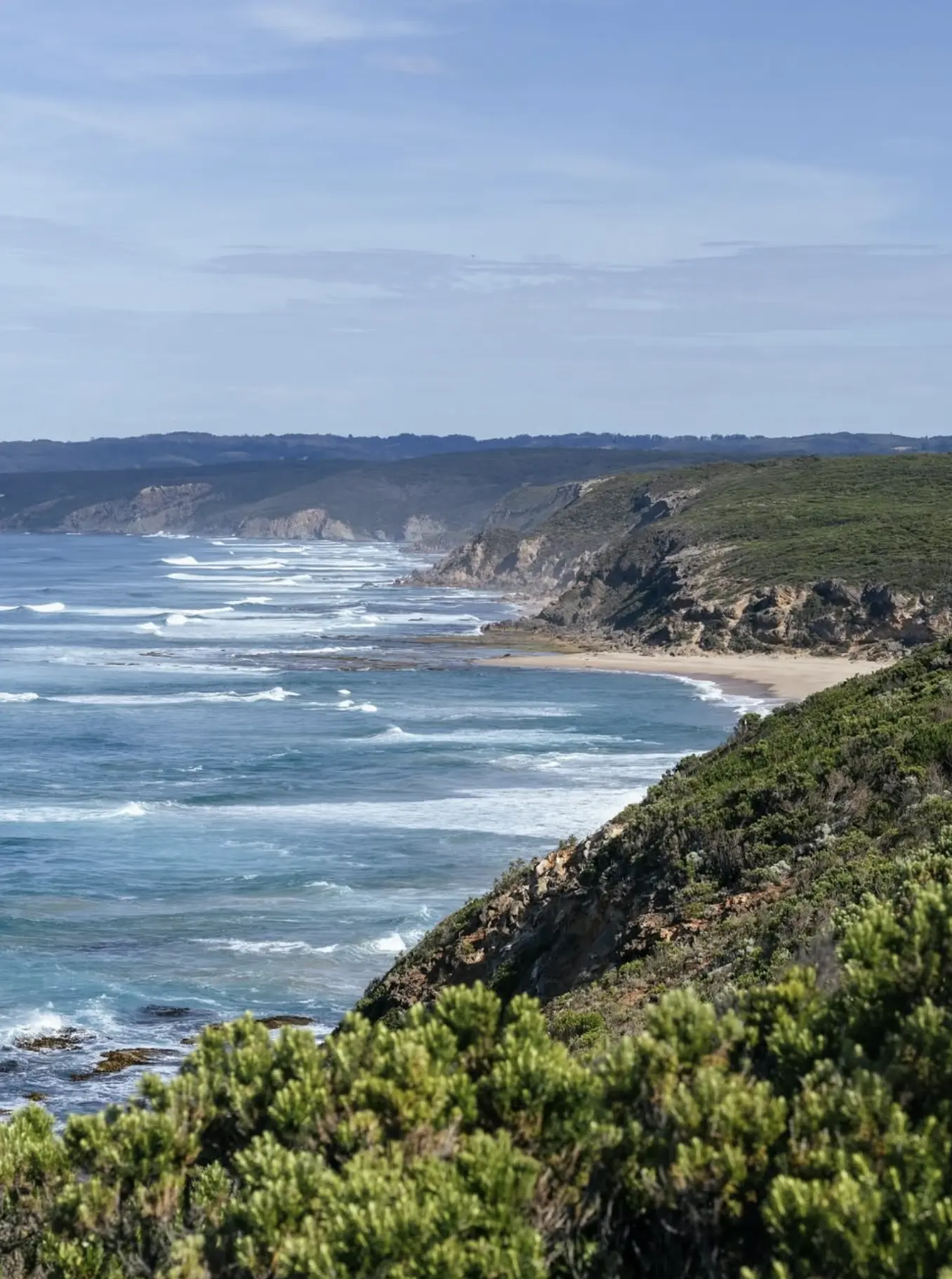Few trails capture the wild heart of Victoria like the Great Ocean Walk. I’ve walked this coastline from Apollo Bay to the Twelve Apostles and every kilometre tells a story — of big surf, tall Mountain Ash and the stubborn beauty of Victoria’s rugged coastline. 110km through Great Otway National Park and Port Campbell National Park, this trail is front row to the Southern Ocean.
Unlike the Great Ocean Road which whizzes you past it all behind a windscreen, the Great Ocean Walk slows the journey to a crawl — a true multi-day trail for those who prefer the smell of eucalyptus over petrol fumes.
What This Iconic Coastal Walk Is All About
Developed by Parks Victoria, this world-class national park trail links old forestry roads, coastal cliffs and ancient bushland from Apollo Bay through Cape Otway to the 12 Apostles Marine Park. You’ll pass remote beaches like Wreck Beach, Milanesia Beach and Johanna Beach, all shaped by the same wild sea that carved the Apostles themselves.
This isn’t a luxury lodge trail — it’s the real deal. Expect mud, rainwater tanks and long stretches of solitude between camping spots. But that’s the point. This is a journey for those who like their adventures a bit rough around the edges.
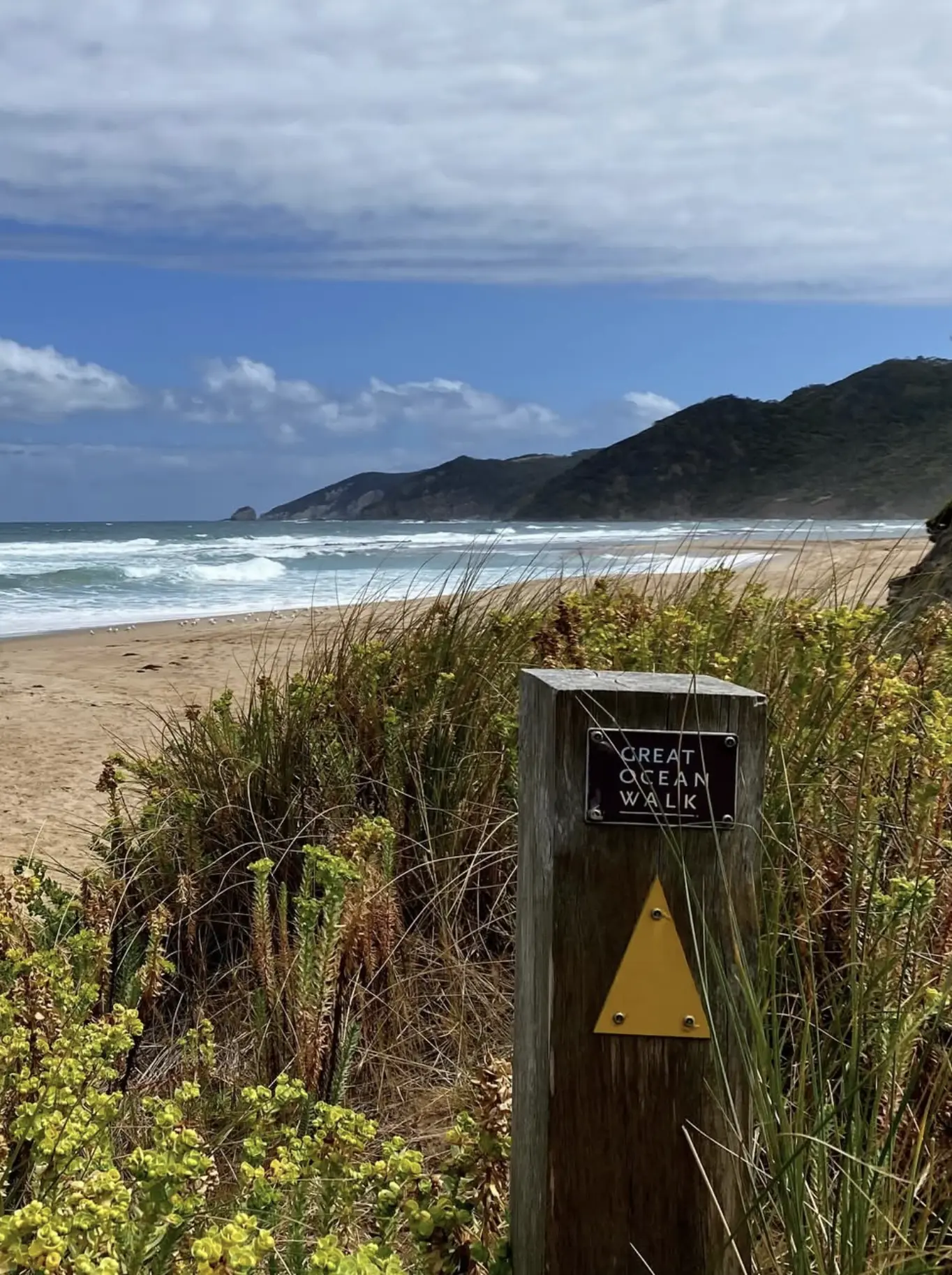
A Short History Of The Trail
The Great Ocean Walk opened in 2006 after years of planning by Parks Victoria and local communities. It was designed to complement the iconic Great Ocean Road, a slower, more immersive way to experience the coast’s geology, wildlife and cultural heritage.
The Gadubanud (King Parrot) and Eastern Maar peoples have called this coastline home for thousands of years. Their stories echo through the forest and beaches from Cape Otway Lightstation to Wreck Beach, where the wreck of the Marie Gabrielle still lies half buried in the sand — a haunting reminder of the Shipwreck Coast’s turbulent past.
Coastal Trail Quick Notes
Here’s a quick summary for when you’re sorting your itinerary or briefing the group around the camp stove.
| Category | Details |
|---|---|
| Total Distance | 110 km |
| Start / Finish | Apollo Bay → Twelve Apostles |
| Typical Duration | 6–8 days |
| Direction | East to west (recommended by Parks Victoria) |
| Terrain | Forest, cliffs, beach sections, heathland |
| Difficulty | Moderate–challenging |
| Camping Spots | 7 official hiker campsites with rain water tanks |
| Transport | V/Line bus from Melbourne to Apollo Bay, shuttle services from Port Campbell |
| Best Season | March–May and September–November |
| Managed By | Parks Victoria |
| Key Waypoints | Blanket Bay, Parker Inlet, Aire River, Johanna Beach, Ryan’s Den, Devils Kitchen, Moonlight Head |
Everything’s there for a reason — tides, weather and wind direction matter on this track more than you think. Always check tide times for beach sections before you head out.
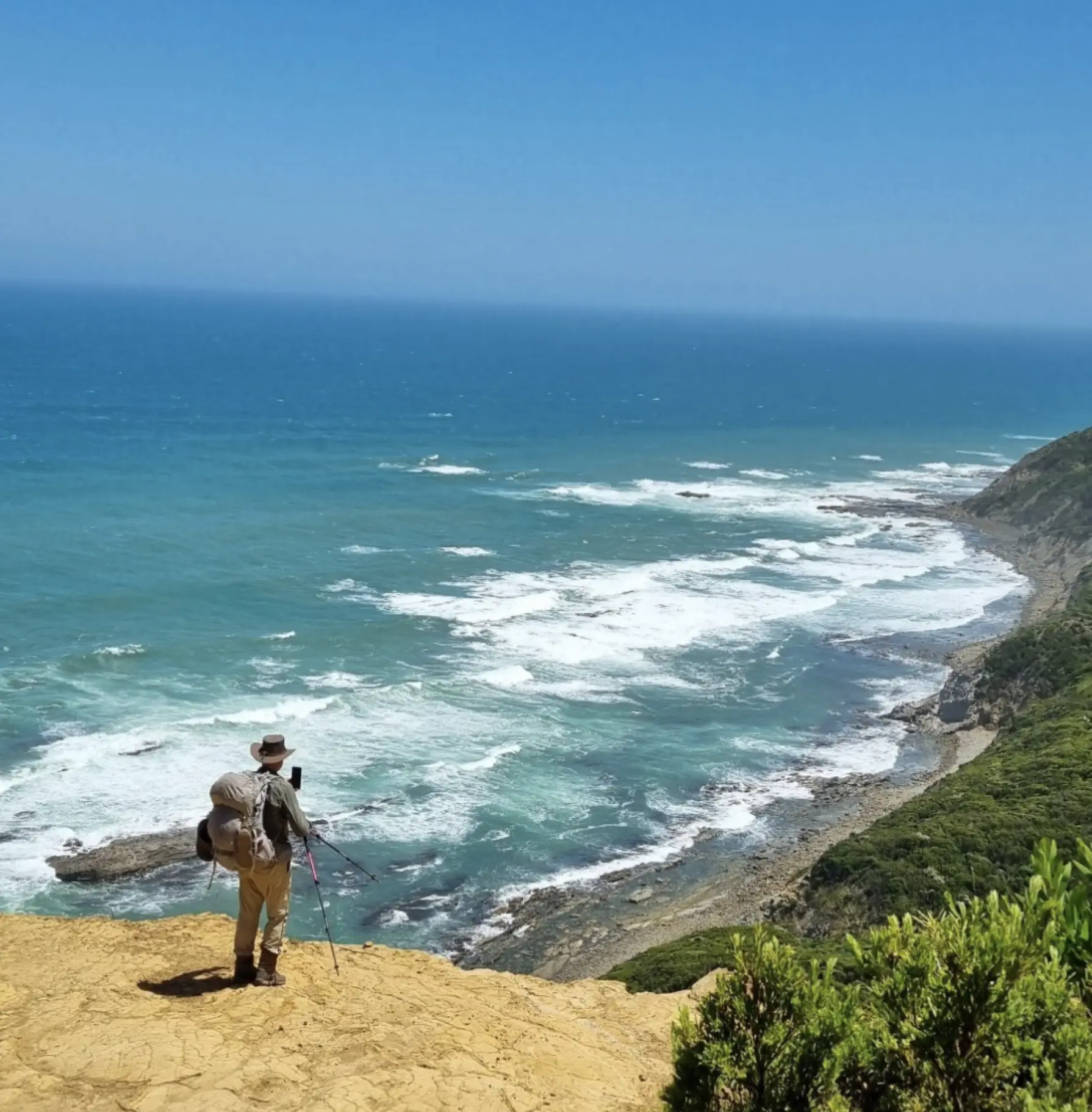
How Long Does the Coastal Trail Take
Most people do the Great Ocean Walk in 7-8 days, 12-15km a day. You can do it faster — but you’ll miss out.
When I first did it I took my time:
- Day 1-2: From Apollo Bay to Blanket Bay, wandering through giant ferns and into the cool shade of Otway National Park.
- Day 3-4: Past Cape Otway Lighthouse and Parker Inlet, where the rainforest meets the sea.
- Day 5-6: Through Milanesia Beach and the ups-and-downs near Ryan’s Den and Devil’s Kitchen.
- Day 7-8: Finish at the Twelve Apostles Visitor Centre, legs sore but feeling alive.
No shortcuts, no regrets — just salt, sweat and satisfaction.
Coastal Trail Sections and Distances
Here’s how most walkers break it up — manageable chunks that end at Parks Victoria hiker campsites:
| Section | Distance (km) | Highlights |
|---|---|---|
| Apollo Bay → Elliot Ridge | 10 | Start at Marengo Reef, native forest, Elliot Ridge Campground |
| Elliot Ridge → Blanket Bay | 12 | Fern gullies, Elliot River Loop Walk, first camp with rainwater tank |
| Blanket Bay → Aire River | 21 | Cape Otway Lightstation, Parker Inlet, Bimbi Park detour |
| Aire River → Johanna Beach | 14 | Castle Cove, Gellibrand River, wild surf at Johanna Beach |
| Johanna Beach → Ryan’s Den | 14 | Coastal climbs, Moonlight Head views |
| Ryan’s Den → Devils Kitchen | 13 | Remote cliffs, Boobyalla shrubs, fairy wrens and wallabies |
| Devils Kitchen → Twelve Apostles | 16 | Final stretch past Gables Lookout, ending near Gibson Steps |
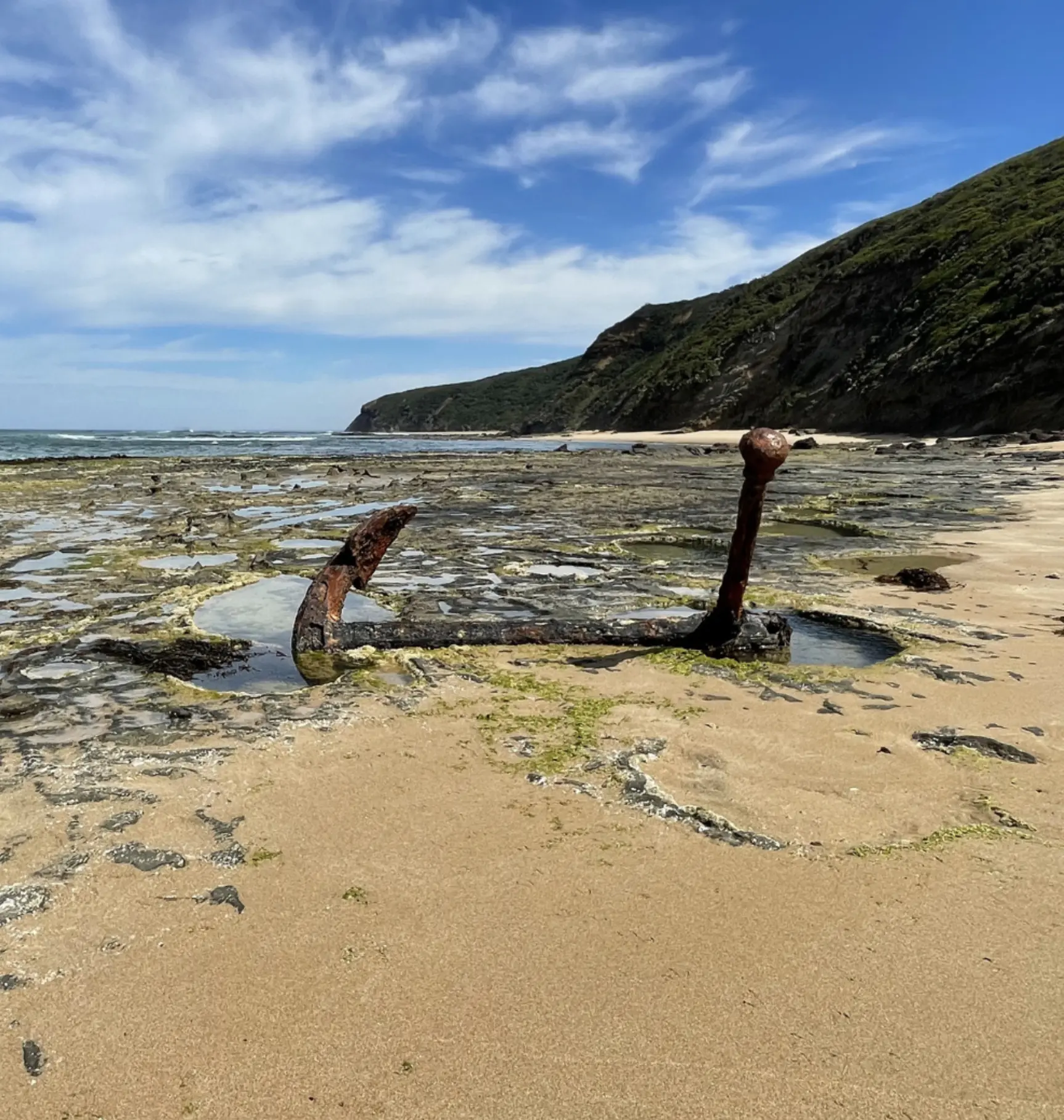
When To Go
Victoria’s coast is moody — beautiful one minute, wet the next. The best months to hike are March to May and September to November when it’s mild, the tracks are dry and the wildflowers are out.
- Summer (Dec–Feb): Warm but exposed; sunburn and snakes are real issues.
- Winter (Jun–Aug): Quieter, dramatic skies, but expect mud and cold nights.
- Autumn (Mar–May): Crisp air, stable weather — my pick.
- Spring (Sep–Nov): Wildflowers, whales and fewer crowds.
Always check Parks Victoria for fire danger ratings and trail closures before you go.
Planning And Campsites
Campsites like Blanket Bay, Aire River, Ryan’s Den, and Devil’s Kitchen have rainwater tanks, a composting dunny and basic camping spots. You need to book all of them in advance through Parks Victoria’s online system.
If you don’t want to carry it all, shuttle services run between Apollo Bay and Port Campbell so you can base yourself at local eco-accredited lodges like Bimbi Park near Cape Otway Light Station.
Note: Always boil or filter from tanks — algae and possum droppings are part of the deal.
Fees: No park entry fee, but a small camping fee per site. If you’ve ever travelled with Phillip Island Tours Australia, you’ll know we love experiences that get you off the bus and into the landscape. The Great Ocean Walk is exactly that — the slow, soulful way to meet Victoria’s wild coast.
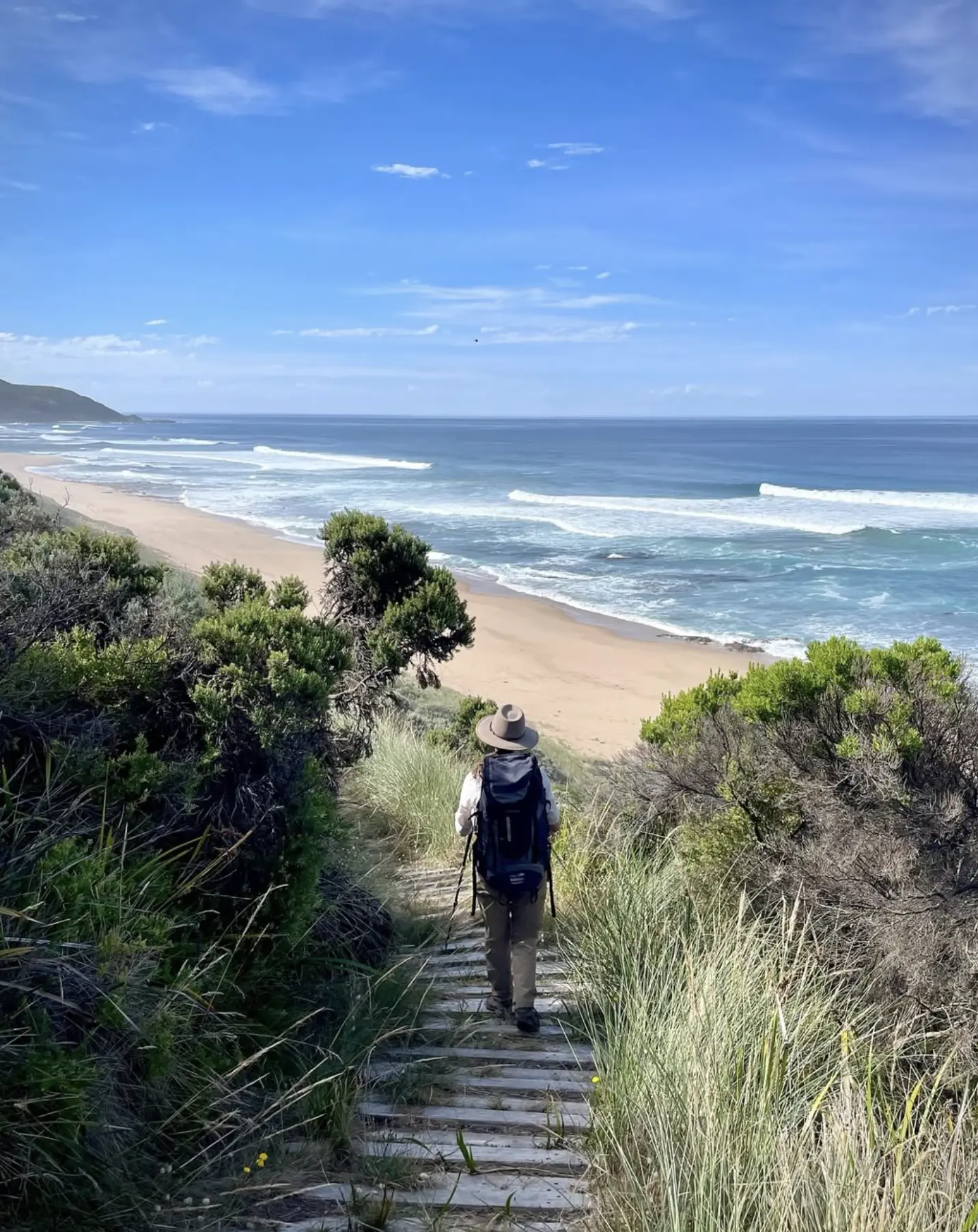
Gear And Packing List
After years of walking these trails, here’s what makes the cut:
Essentials:
- Waterproof hiking boots
- Sea to Summit 60L pack
- Lightweight tent
- Trekking poles
- Rain jacket and pack liner
- First-aid kit
- FarOut App (for digital trip notes and tide times)
- Gas stove and billy
- Extra food — there’s no cafe between Apollo Bay Visitor Information Centre and Port Campbell
Nice to have:
- Camp shoes
- Compact towel
- Solar charger
- A tinnie for the final night at Devil’s Kitchen
If you’re comparing other great walks, this one stacks up well against New Zealand’s Milford Track, Routeburn Track, and Kepler Track — wild, remote and full of coastal character.
Common Mistakes First-Timers Make
The Great Ocean Walk isn’t Everest, but it’s not a walk in the park either. Here’s what I see newbies mess up most:
- Tide times: Parts of Wreck Beach can disappear under the surf.
- Not filtering water: Even clean tanks can go funky in summer.
- Underestimating climbs: Between Milanesia Beach and Ryan’s Den, it’s steep.
- Overpacking gadgets: Leave the drone — this is a national park, not a film set.
- Forgetting weatherproof layers: The Southern Ocean doesn’t do mercy.
Remember, this is wilderness, not wilderness-lite.
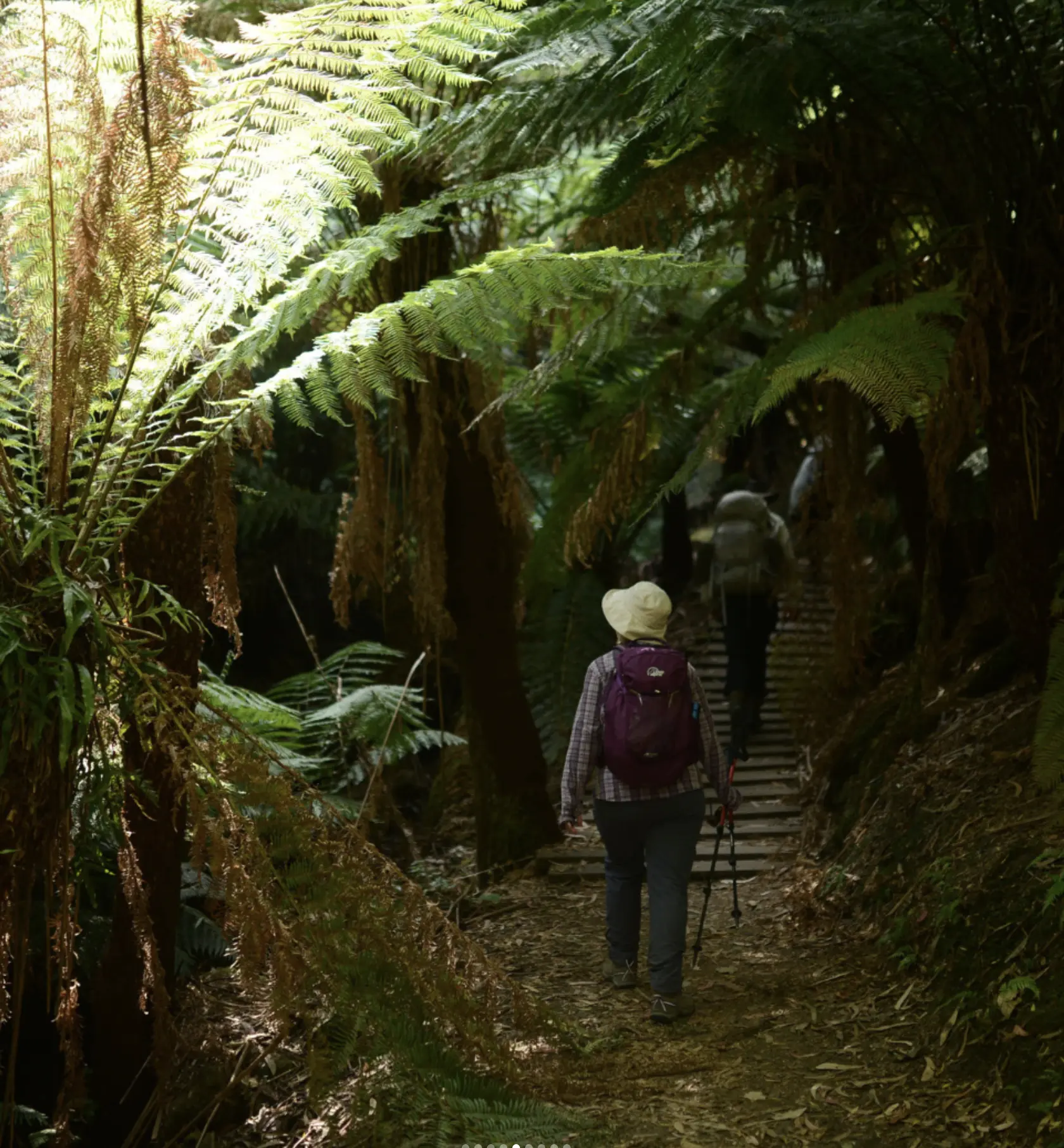
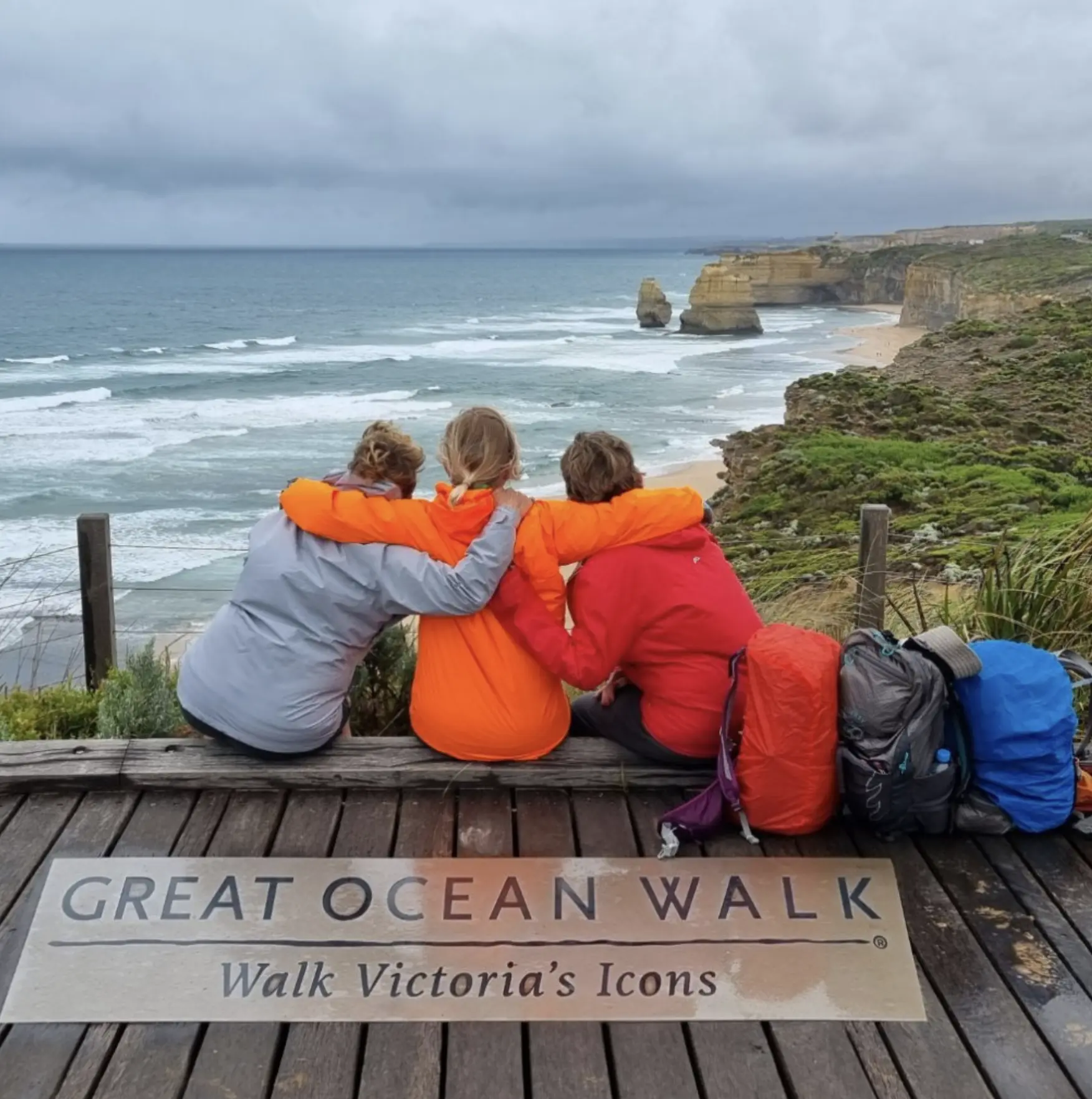
How To Train For The Walk
You don’t need to be a marathoner, but a bit of conditioning pays off. A few weeks out, start walking 10–15 km a few times a week with your loaded pack. Throw in some stairs or local trails to mimic the up-and-down terrain.
Focus on:
- Legs: lunges, squats, and hill climbs
- Back and shoulders: light weights or resistance bands
- Cardio: brisk walks or cycling sessions
I’ve seen people turn up untrained and still make it — but they paid for it in sore knees and early finishes. A bit of prep now saves a lot of swearing later.
Local Stories From The Trail
One night near Ryan’s Den, I woke to the sound of the Southern Ocean pounding the cliffs below. My tent was flapping like a kite. The rainwater tank was rattling and the whole campsite erupted in laughter as someone’s tarp went flying into the scrub.
Another time I reached Wreck Beach at low tide and stood beside the rusty anchor of the Marie Gabrielle. Hard to imagine those ships sailing blind into this coast before Cape Otway Lighthouse was built.
And at the end, watching sunset over Gog and Magog — those sea stacks near the 12 Apostles — I felt that same mix of exhaustion and awe. There’s nothing like finishing a week’s walk with the sea spray in your face and a grin that won’t go away.
